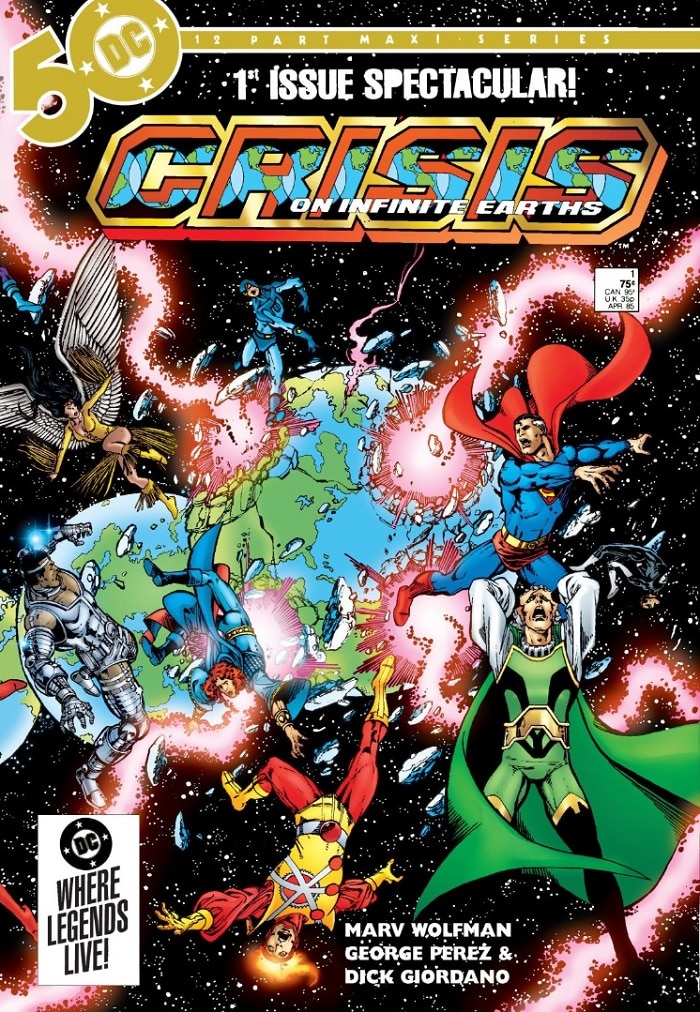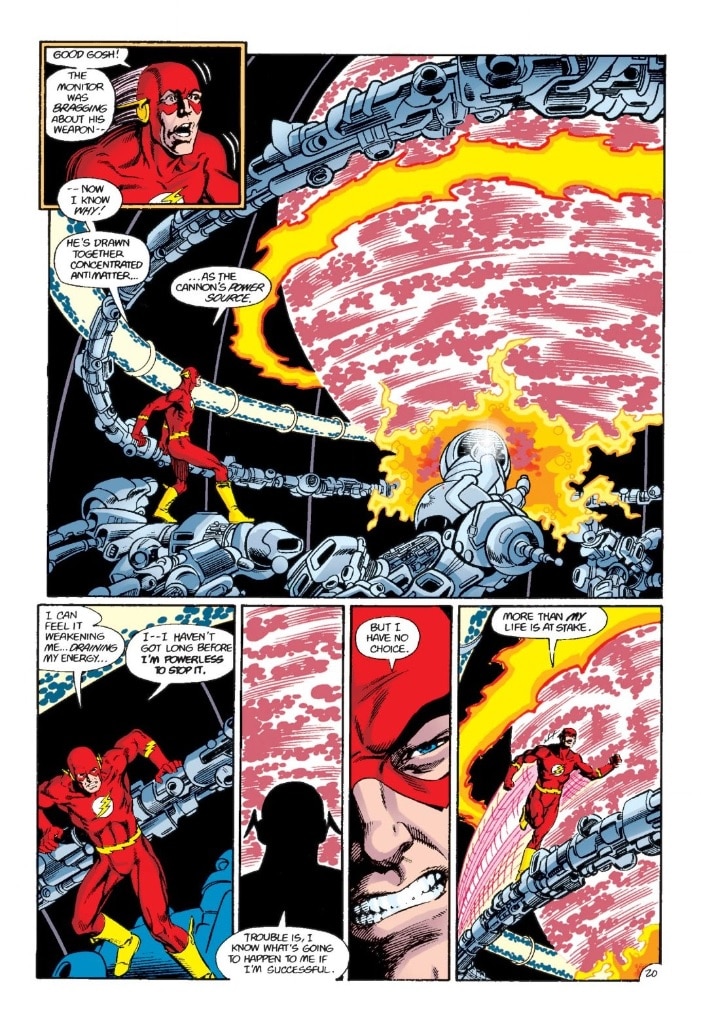Every now and again, there is a DC story so massive that it shifts the very fabric of reality. We tend to call those stories "Crises" for a couple of reasons. It first started back in 1961 with story written by Gardner Fox and drawn by Carmine Infantino called “Flash of Two Worlds” that kicked off the whole idea of the Multiverse. Later, Fox further expanded on the idea in the pages of JUSTICE LEAGUE OF AMERICA with a two-part tale called “Crisis on Earth-One” and “Crisis on Earth-Two” and a naming convention was born. Stories that involved different, alternate Earths populated with different, alternate heroes crossing over with one another were Crisis events, and for years, that's all there was to it.
Then came 1985 and an event called CRISIS ON INFINITE EARTHS, and everything started to change. Written by Marv Wolfman and drawn by George Perez, this was a Crisis unlike any that had come before it, one that was going to shift the course of DC history forever and always. Originally designed to be a twelve-issue series that would streamline all of DC continuity in a way that would tie the disparate threads of the Golden, Silver and Bronze Ages together in neat little bows, Crisis on Infinite Earths wound up laying the groundwork for virtually every major event in the DC Universe, from its direct spiritual sequel INFINITE CRISIS to the Source Wall-shattering DARK NIGHTS: METAL. (One of the rare Crisis-like events that doesn’t use the naming convention.)

Put simply, Crisis on Infinite Earths is a huge deal. So, when we recently got a chance to sit down with Wolfman and Perez, we used the opportunity to take a look back at one of their most epic collaborations…and to get the inside story of just how you rewrite the rulebook for an entire universe of superheroes in just twelve issues.
It turns out that forever altering the cosmos has some shockingly humble beginnings. "I was editing and writing the Green Lantern letters column, and there was a fan who wrote in who said DC continuity was confusing," Wolfman recalled, "And I said ‘one day we'll fix it.’ So that afternoon, a whole bunch of us were heading to a convention in either Philly or Pittsburgh, and in typical fashion, I got to the train station very early, but everyone else was incredibly late. And for some reason, that letter kept resonating, I kept thinking about it, and by the time everyone showed up, the concept of what would happen with Crisis was fully blown and I told them what I had just come up with."
In the space of an afternoon, Wolfman had mapped out what would eventually become one of the most definitive stories in DC history. Of course, it wasn't quite that simple. Wolfman admitted it took "several years," after that fateful day to actually iron out the details—and to get the other key component, artist George Perez, on board.
"Originally George was not going to be part of it,” Wolfman admitted. “But I kept talking to him about what we were doing, so eventually he said ‘I want in.’ Which was exactly what I was hoping for because nobody else could have drawn that book. Period. Nobody. It went from there."

Perez has his own side of the story, of course. "I was just going to go through and pace it and sneak in as many extra characters as I could, since obviously the plot told you the specific characters who were needed in order to progress the story. So, I would find ways of putting in other characters in the background and stuff like that," he said, but was quick to add that, for as small as it seemed starting out, "There was one point when I actually realized that this thing was becoming massive. Marv did a scene and I drew it and then in the following issue the same exact scene happened—it was getting out of hand."
That's when Perez took his contributions to the next level and started offering story notes and things really got off the ground. Wolfman explained, "George came in to co-plot, it just took so much pressure off of me. The basic overview of Crisis always remained the same, but the details, the stuff that made it work, our shorthand just informed that whole story. So, everything changed once that happened and so much of the pressure left."

Of course, there were some downsides to Perez signing on for more. As he joked, “One of the things—the extra repercussion from it—was the fact that, of course, any change that was going on before I got involved with the plot, you could just blame Marv. Now, I had to share the blame too."
Thankfully, there isn't much blame to go around these days, especially not when the foundation laid out all the way back in 1985 is still being built on. Without that first reorganization of the Multiverse, we wouldn't have Metal or Doomsday Clock, we wouldn't have the Dark Multiverse, and we wouldn't be seeing "Crisis on Infinite Earths" getting adapted as a TV crossover mega-event.
And of course, Wolfman and Perez’s iconic Crisis on Infinite Earths is always available, both as a collected graphic novel, and as a digital download. Just in case you’re looking to expand your world.




















